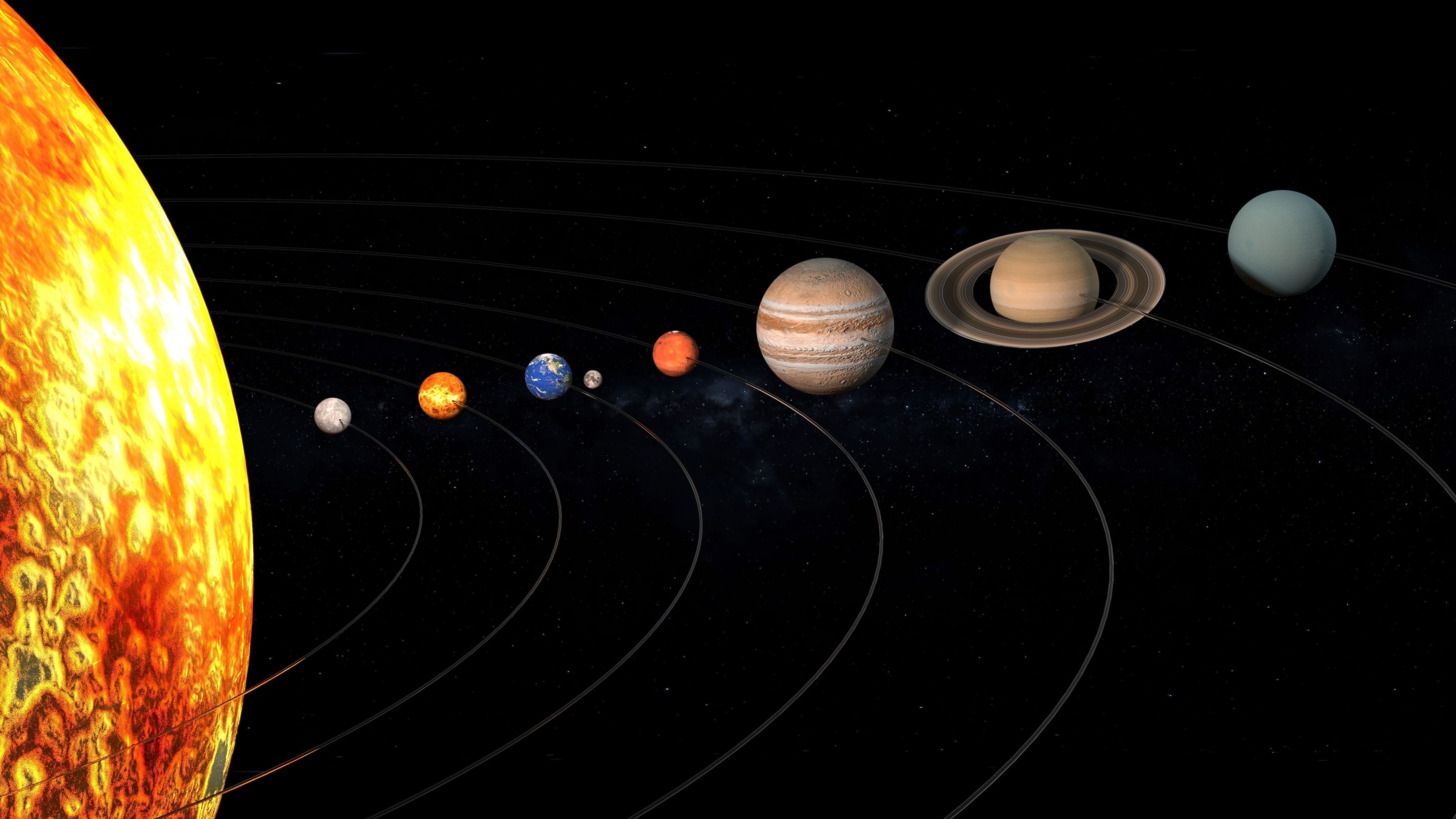Our solar system, a majestic symphony of planets, moons, asteroids, and comets, boasts a fascinating origin story. Formed billions of years ago from a giant cloud of gas and dust, the solar system's evolution is a captivating tale of gravity, swirling motion, and the birth of celestial wonders. This article delves into the wondrous process of how our solar system formed from a nebula.
Imagine a vast, swirling cloud of gas and dust, composed primarily of hydrogen and helium, along with trace amounts of heavier elements. This celestial entity is called a nebula, and it serves as the birthplace of stars and planetary systems. Our solar system can trace its roots back to such a nebula, estimated to have been roughly 12 light-years across.
The serene existence of the nebula wasn't meant to last forever. A triggering event, possibly the shockwave from a nearby supernova explosion or the gravitational pull from a passing star, disturbed the nebula's equilibrium. This disruption caused the densest regions within the nebula to begin collapsing under their own gravity. As these denser regions contracted, they heated up due to the conversion of gravitational potential energy into thermal energy.
The collapsing nebula didn't simply shrink into a single, dense mass. As it contracted, it also began to rotate faster due to the conservation of angular momentum. Imagine a spinning ice skater pulling their arms in; the faster they pull their arms in, the faster they spin. Similarly, the nebula's rotation accelerated as it contracted, leading to the formation of a flattened, swirling disk – the protoplanetary disk. This swirling disk, composed primarily of hydrogen gas with dust and ice grains mixed in, became the stage for the birth of our solar system.
Within the protoplanetary disk, gravity continued to play a starring role. Dust and ice grains within the disk clumped together due to gravitational attraction, eventually forming small rocky bodies called planetesimals. These planetesimals ranged in size from pebbles to objects a few kilometers across. Over vast stretches of time, collisions between planetesimals became more frequent, leading to the growth of larger bodies – the protoplanets.
While the protoplanetary disk was busy birthing protoplanets, a momentous event was unfolding at its center. The immense pressure and heat caused by the collapse of the nebula triggered nuclear fusion in the core region. Hydrogen atoms began to fuse into helium, releasing a tremendous amount of energy. This marked the birth of our Sun, a main-sequence star radiating light and heat throughout the solar system.
With the Sun ablaze, the protoplanetary disk eventually began to dissipate. The Sun's powerful solar wind, a stream of charged particles, exerted a strong outward pressure on the disk's gas and dust. Over time, this relentless pressure pushed most of the gas and dust out of the solar system, leaving behind the planets, moons, asteroids, and comets that make up our cosmic neighborhood today.
The scorching heat emanating from the young Sun had a profound impact on the composition of the solar system. Closer to the Sun, where temperatures were higher, rocky materials like iron and silicon condensed to form the inner planets – Mercury, Venus, Earth, and Mars. Farther from the Sun's scorching heat, in the outer reaches of the protoplanetary disk, temperatures remained frigid. Here, ices, including water ice, methane ice, and ammonia ice, were able to condense and form the building blocks of the outer solar system – Jupiter, Saturn, Uranus, and Neptune, also known as the gas giants.
The birth of our solar system wasn't a perfectly clean process. Leftover debris from the protoplanetary disk, including rocky and icy materials that avoided accretion into planets, remained scattered throughout the solar system. These leftover materials are responsible for the formation of the asteroid belt, located between Mars and Jupiter, and the Kuiper Belt, a vast reservoir of icy objects beyond Neptune's orbit. Comets, icy leftovers that venture closer to the Sun, are also remnants from the solar system's formation process.
The formation of our solar system, estimated to have begun around 4.6 billion years ago, is a captivating story of celestial transformation. From the swirling chaos of a nebula to the majestic dance of planets, moons, and other celestial bodies, the solar system's evolution paints a remarkable picture.
The birth of our solar system wasn't a one-time event. The planets, moons, asteroids, and comets continue to evolve. Giant planets like Jupiter and Saturn act as giant cosmic vacuum cleaners, sweeping up debris and shaping the orbits of smaller objects. Asteroids and comets occasionally collide with planets, leaving behind craters and potentially delivering water and other vital elements. The Sun itself is constantly changing, slowly converting its hydrogen fuel into helium. Billions of years from now, the Sun will enter a new phase of its life cycle, dramatically altering the solar system.
Tags:
Cosmology

